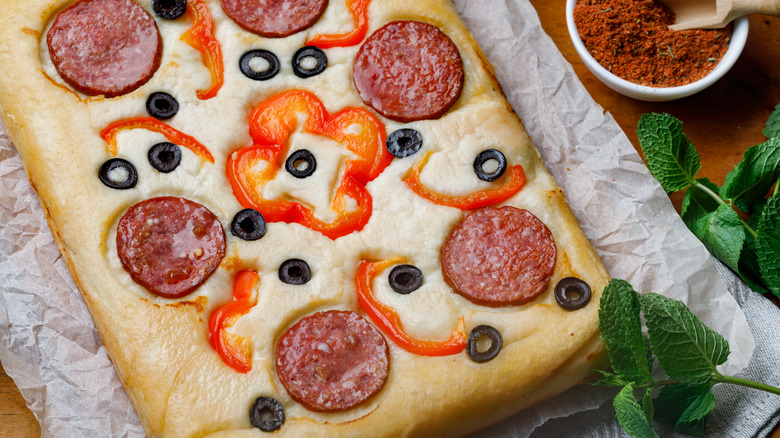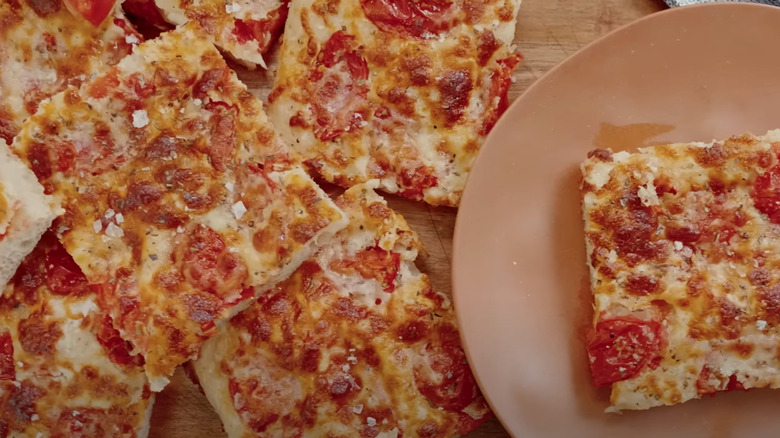The Inverted Pizza Technique You Need To Try For Optimal Caramelization
Nothing epitomizes the diversity of this country more than its culinary landscape. Immigrants from all over the world have settled in the United States, bringing food from their cultural ancestors and enriching our palates from sea to sea. A 2022 survey by GrubHub (via Reader's Digest) revealed that Americans' favorite dishes range from classics, such as chicken nuggets and hamburgers, to global fare like sushi and chicken tikka masala.
However, with over 75,000 pizzerias nationwide, our love for pizza reigns supreme. According to USA Today, Americans usually prefer a slice over a steak or bowl of pasta any day of the week. While your zip code may influence your favorite pizza topping or preferred style of pizza, science is to blame for our insatiable pizza cravings.
Per The Washington Post, food scientists say humans are drawn to "fatty, sweet, rich, and complex" foods, and pizza checks all the boxes. Although delicious on their own, combining tomatoes and cheese creates a flavor compound that tastes even better together. Once you add heat to the equation, sugars and proteins caramelize, the Maillard reaction takes place, and willpower doesn't stand a chance.
There's no doubt that each region thinks its style of pizza is the best. From NY-style Neopolitan pizza to Chicago deep-dish or grilled pizza from Rhode Island, there's an argument to support them all. However, a lesser-known style of pizza from Rome inverts the dough, which delivers a crispy crust and caramelized toppings every time.
What is inverted pizza?
Katie Parla, cookbook author of "Tasting Rome," introduced a modern Roman pizza method called pizza al contrario, or inverted pizza. Baker Gabriele Bonci, owner of Pizzarium in Rome, is credited with creating this non-traditional approach to cooking pizza.
Bonci places toppings like sliced onions, fresh thyme, and olives onto a baking pan with olive oil, then carefully stretches well-hydrated pizza dough to cover the toppings. After the pizza is baked, it gets flipped — or "inverted" — to reveal soft, caramelized onions baked into the dough in a way that evokes Italian focaccia. The steam created from cooking the toppings keeps the dough's surface moist. Inversion also causes the bottom of the dough to turn a perfect golden brown due to direct heat exposure.
Parla claims this method of cooking pizza is advantageous to home cooks because most kitchen ovens have hot spots that create uneven cooking. By inverting the dough, the crust gets evenly browned while the toppings' edges get caramelized from direct contact with the baking pan. Usually, results like these require a pizza stone. However, a typical baking sheet is all you need for pizza al contrario.
When making inverted pizza, feel free to explore different toppings. However, avoid high sugar content ingredients like barbecue sauce or fig jam, as high heat will burn them. Add those condiments after flipping the pizza, or keep it simple with a drizzle of extra virgin olive oil and dollops of soft cheese like ricotta before serving.

